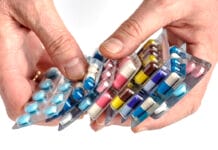Truth be told, I had another version of this article with “how-tos,” “what-to-dos,” and pieces of advice from my experience thus far; I thought that would be the best way to share with my fellow dental hygienists. I will share those with you, but I also want to highlight the best way to gain restorative case acceptance is through patient education and developing a trusting relationship with your patient.
As dental hygienists, it is not our final say in what restorative treatment our patients need. However, we are our patients’ best source of knowledge because our patients tend to trust our opinion because we are the providers who spend the most time with patients. We are very fortunate to have many tools and resources to help enhance our patient education experience, which in turn, can help in successful restorative case acceptance.
In the first couple of months of practicing as a dental hygienist, I thought I had executed everything perfectly in my day to day practice; from periodontal charting to patient education. My patients even complimented me on how well I took care of them. To me, it seemed very satisfying I was doing my job well, but there was one thing I wasn’t overly confident in doing, and that was helping my doctor find opportunities for restorative treatment. How do I begin to tell a patient what they need on a restorative level?
For a new dental hygienist, learning how to master the art of restorative case acceptance won’t happen in a snap of a finger. Like most things we have mastered and are very skilled at now, we are aware it takes time and practice to perfect other skills.
Before we fine-tune our skills in restorative case acceptance, we must be open to roleplay with our doctors and team members, as this will help give perspective on the delivery of your verbiage. What may help in the process of roleplay is understanding what your doctor’s treatment recommendations are for restorative treatment. For example, identifying a “shadow” on a radiograph, giving a patient a scenario of what the possibilities are if the doctor diagnoses the “shadow” as decay, and what treatment the patient should expect. Getting to know your doctor’s treatment recommendations are crucial, as it will help you be more in sync with your doctor, which in turn provides the best outcomes for patients.
Restorative case acceptance is becoming easier to accomplish with the availability of digital technology integrated into dental practices. Some of these include digital radiography, intra-oral cameras, decay-detecting equipment, and digital scanners. This technology enhances the patient education experience, as it greatly supports your clinical findings and can help patients understand areas of concern and treatment which should take place. Use this technology to both your patients’ and your benefit.
If appropriate, creating a sense of urgency will give your patient an idea on how soon decay or an infection needs to be treated. Utilizing the Problem, Consequence, Solution model will also support the sense of urgency. If additional time is available, helping the patient schedule for restorative treatment in the treatment room can also help with restorative case acceptance.
The mastery of restorative case acceptance should never be something a dental hygienist does alone. Working with your team members is a recipe for success in restorative case acceptance. You must also be given adequate time to thoroughly educate patients if there is a need for restorative treatment. Without adequate time for patient education and patient questions, you are not only doing a disservice to the patient but also to yourself as a healthcare provider and to the office’s bottom line. Adequate chair time for dental hygienists will also help improve the patient-provider relationship.
If we continue to the spend more time with our patients, providing the resources and knowledge they need to know about their oral health, they are more likely to decide for themselves to move forward with restorative treatment.
Before you leave, check out the Today’s RDH self-study CE courses. All courses are peer-reviewed and non-sponsored to focus solely on high-quality education. Click here now.
SEE ALSO: Dental Hygienists and the Business of Dentistry
DON’T MISS: How to Assist Patients who Prefer an Alternative Approach to Dental Care











